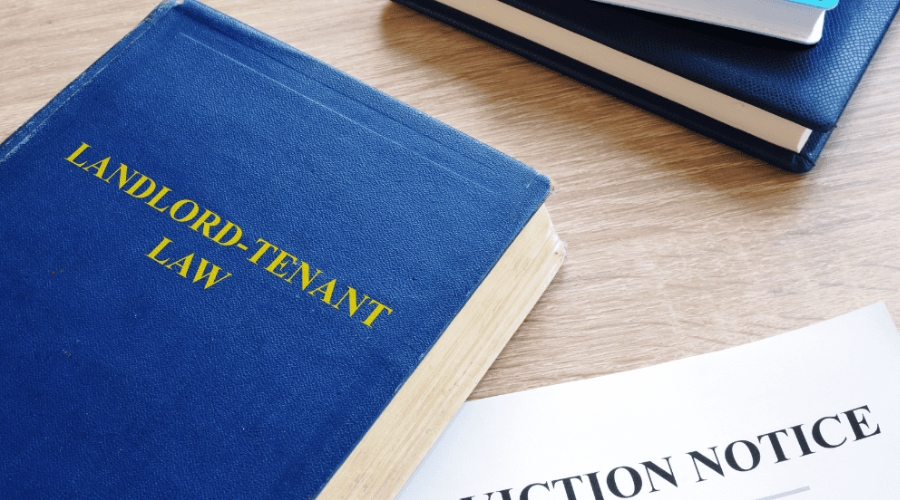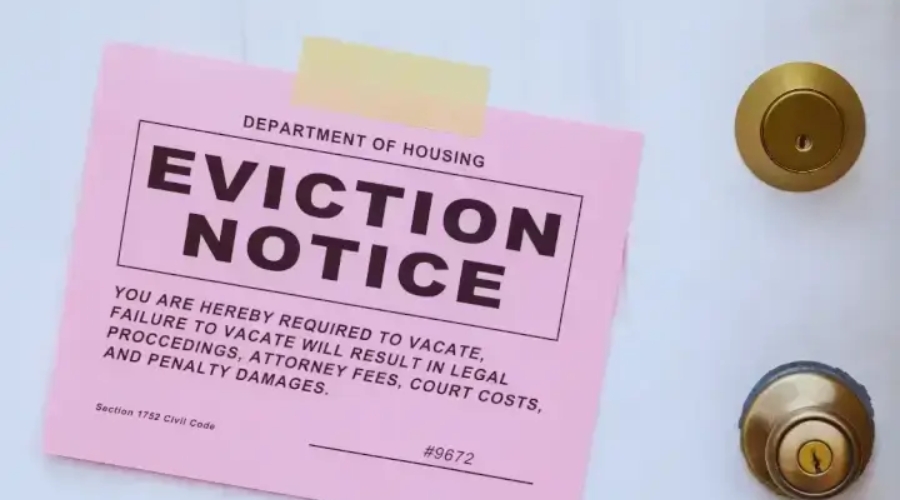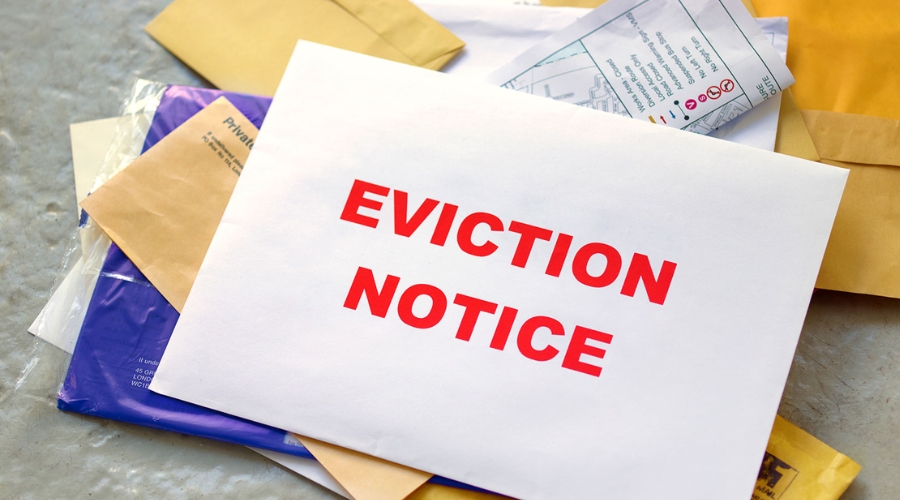Navigating the eviction process in Maryland can feel overwhelming for both landlords and tenants. With strict legal steps, specific timelines, and required documentation, one small mistake could delay the entire process or lead to costly consequences. Whether you're a new property owner or a seasoned landlord, understanding the rules is essential. In this guide, LeaseRunner breaks down everything you need to know to stay compliant, avoid common pitfalls, and protect your rights every step of the way.
New Changes to Maryland Eviction Laws (2025)
Starting October 1, 2024, under the Renters’ Rights and Stabilization Act, and with further provisions coming into effect in 2025, Maryland Eviction Laws has introduced several updates impacting how both landlord rights and tenant protections are exercised:
- Eviction Fee Caps and Notice Requirements:
- Eviction filing fees have risen statewide (e.g., to about $50, $60 in Baltimore), but landlords are not permitted to pass these fees directly to tenants in most circumstances.
- Eviction-related notices, including the Writ of Restitution, must now be written and formally delivered beginning in October 2025.
- Limits on Fees and Security Deposits: Late charges are now capped at a maximum of 5 % of monthly rent, and security deposits cannot exceed one month’s rent. Landlords must provide a receipt for any deposit collected. Any excess may entitle tenants to treble damages.
- Tenant Shielding of Eviction Records: As of October 1, 2024, tenants who have paid owed rent and remained in the unit, and for whom no judgment for possession was issued, may apply to shield eviction records from public view after 12 months and within 60 days of resolution.
- Tenant Right to Counsel (RTC) and Program Impact: Maryland’s statewide Access to Counsel in Evictions (ACE) program continues in January 2025, showing that 88 % of represented tenants avoided displacement, saving the state an estimated $46 million in social costs.
- Just Cause Eviction (Pending Legislation): A “just cause eviction” bill remains under consideration. If enacted, it would require landlords in participating cities/counties to offer specific written reasons—such as non‑payment or lease violation—before refusing to renew a tenancy. It is slated to take effect on October 1, 2025, with local jurisdictions allowed to opt in.
- Maryland Tenants’ Bill of Rights: Landlords are required to provide tenants with a copy of the Tenants’ Bill of Rights with every new residential lease. This legislation also limits application fees to no more than $25 for rental properties with five or more units, and waives the fee entirely if the tenant provides a recent screening report.

Legal Reasons to Evict a Tenant in Maryland
Landlords in Maryland must follow strict legal guidelines when removing a tenant. Below are the legal reasons to evict a tenant in Maryland, each requiring specific notice periods and procedures:
Unpaid Rent
One of the most common legal grounds for initiating the eviction process in Maryland is the nonpayment of rent. If a tenant misses the rent deadline—even by a single day—they are considered late unless a grace period is clearly outlined in the rental contract.
Landlords must provide tenants with at least a 10-day written notice before filing for eviction due to nonpayment of rent. However, tenants who pay the overdue amount in full within this notice period may still avoid legal action and retain their right to remain in the rental unit. To prevent unintentional lease violations, it’s important for tenants to stay aware of their rent due dates and understand the terms of their rental agreement.
Lease Violations
A valid eviction process can also stem from a tenant failing to adhere to the lease terms. These agreements serve as binding contracts between the landlord and tenant and must be honored for the full duration of occupancy.
When a tenant breaks any of these conditions—such as causing property damage, allowing unauthorized pets, disturbing neighbors, or violating any community-specific restrictions—the landlord can issue a 60-Day Notice to Quit.
However, tenants involved in hazardous or threatening actions within the premises may be served a 14-Day Notice to Quit, reflecting the seriousness of the infraction. In Maryland, landlords are not required to offer the tenant a chance to fix the lease breach before pursuing eviction.
Criminal or Dangerous Conduct
If a tenant commits a crime or threatens the safety of others on the property, the landlord has legal grounds to begin the eviction process. These actions can include illegal drug activity, violent acts, or any conduct that compromises the safety of the property or its residents.
In such cases, the landlord is permitted to move forward with a 14-Day Notice to Quit. This expedited timeline is meant to address urgent threats without delay, protecting the community from harm.
Holdover Tenant (Lease Expired or No Lease)
When a lease term ends and the tenant continues to occupy the unit without renewing, they become a “holdover tenant.” In Maryland, landlords must give the appropriate notice to legally ask the tenant to leave, depending on the lease type and location.
This includes 7-Day, 60-Day, or 90-Day Notices to Quit, based on the rental agreement's nature. However, specific areas like Baltimore City and Montgomery County have different requirements. For instance, in Montgomery County, a tenant renting month-to-month for less than 12 months must receive a 2-Month Notice to Quit.
If the tenant refuses to leave after this period, the landlord may proceed with the eviction process in court to regain control of the rental property. However, if the occupant qualifies under Maryland squatter rights, which allow certain long-term unauthorized residents to claim legal possession under specific conditions, the landlord must follow a different legal path.
Serving an Eviction Notice in Maryland
When beginning the eviction process in Maryland, the first legal step is to serve the tenant with a valid eviction notice. This notice must meet specific state requirements depending on the reason for eviction, and it must be delivered in a way the law permits.
Let’s break down the essential steps to properly serve an eviction notice in Maryland:
Pick the Right Type of Notice
Choosing the proper eviction notice depends on the reason for termination. Maryland law outlines different notice types based on the issue at hand:
- If a tenant fails to pay rent, issue a 10-day Pay or Quit notice. This gives the tenant ten calendar days to pay the overdue rent or face eviction.
- For lease violations unrelated to rent (e.g., unauthorized occupants or pets), a 30-day notice to cure or quit is required. This notice does not require allowing the tenant to remedy the violation.
- In cases of illegal activity or threats to health or safety, a 14-day unconditional quit notice may be used.
- If the lease has ended and the tenant has overstayed, the type of notice depends on the rental term:
- 7 days for weekly tenancies
- 60 days for month-to-month agreements
- 90 days for yearly or longer leases
Using the correct form ensures compliance and prevents delays in the eviction process in Maryland.
Include Required Details
Each eviction notice must clearly state:
- The reason for eviction, such as nonpayment of rent or specific lease violation
- The amount due, if applicable, and how to cure the issue (if allowed)
- The deadline by which the tenant must act (pay, fix the problem, or vacate)
- A statement that legal action will follow if the tenant does not comply
Additionally, notices should be written in clear, understandable language. In areas with diverse populations, providing a translated version can support transparency, though not legally required. Failing to include the required information may result in the court dismissing your case.
Serve the Notice Legally
Proper delivery is critical. Maryland law permits several methods:
- Personal delivery to the tenant or another adult (18+) living at the rental unit
- Post the notice on the front door if the tenant cannot be reached in person
- Mail a copy via first-class mail with a certificate of mailing
- Electronic delivery, but only if the tenant has previously agreed in writing to receive notices this way (email, tenant portal, or text)
Landlords must wait until the notice period ends before filing a summary ejectment (eviction lawsuit) with the District Court in the county where the rental property is located. Attempting to file early may result in dismissal.
Serving documents incorrectly can delay or invalidate the eviction process, so following proper court procedure is essential.
Never Use Self-Help Eviction
Maryland strictly prohibits landlords from taking evictions into their own hands. This includes:
- Changing locks
- Shutting off utilities
- Removing the tenant’s belongings
- Threatening or harassing the tenant to force them out
Only a District Court judge can authorize an eviction. After winning the unlawful detainer case, the landlord must request a Writ of Restitution, which allows the sheriff or constable to carry out the physical eviction. Attempting a self-help eviction is illegal and can expose the landlord to lawsuits, fines, and possible criminal charges.
Respecting tenant rights during the eviction process in Maryland protects landlords from legal risk and supports a fair, enforceable resolution.

Step-by-Step Eviction Process in Maryland
The eviction process in Maryland must follow strict legal procedures to be valid. Landlords are required to move through each phase carefully to avoid delays or case dismissal. Here’s a breakdown of the steps involved
Step 1 – Serve the Proper Notice
The process starts by serving the tenant a formal notice. This notice depends on the type of violation—typically failure to pay rent or breach of lease terms. For unpaid rent, landlords may issue a “Failure to Pay Rent” notice without waiting for any grace period.
Other cases, like lease violations, require a written “30-Day Notice to Quit” or a “14-Day Notice” if there's a threat to health or safety. Delivering the correct notice type is crucial to initiate the eviction process lawfully.
Step 2 – File a Complaint
If the tenant does not resolve the issue within the notice period (when applicable), landlords may file a formal complaint with the District Court in the county where the rental unit is located.
The complaint should include all relevant documentation, such as a copy of the lease, payment history, and evidence of any notice served. Filing properly is a crucial step in streamlining the eviction process and ensuring the court can move the case forward without delay.
Step 3 – Let the Court Serve the Tenant
Once the complaint is filed, the court will arrange for the tenant to be officially served. A sheriff or approved process server must deliver the summons and complaint to the tenant.
If personal delivery fails, posting the notice on the rental unit and mailing a copy is allowed. This ensures the tenant is informed and can prepare a defense, which is a core part of due process in the eviction process in Maryland.
Step 4 – Prepare for the Court Hearing
Both parties attend a court hearing, usually within five to seven days after the complaint is filed. Landlords should bring all relevant evidence—such as rent ledgers, a copy of your lease agreement, and proof of notices served. Clear documentation supports your case and avoids continuances that could slow down the eviction process in Maryland.
Step 5 – Judgment and Writ of Restitution
If the judge rules in favor of the landlord, a judgment for possession is issued. The tenant usually has four days to leave the property voluntarily.
If they don’t move out, the landlord can request a “Writ of Restitution.” This court order gives legal authority for removal and is a key step in finalizing this eviction process.
Step 6 – Sheriff Carries Out the Eviction
The final stage involves the sheriff carrying out the physical eviction. After receiving the writ, the sheriff schedules a date—typically within ten days—to oversee the removal of the tenant and their belongings.
The landlord must be present and provide access. It’s illegal for landlords to carry out self-evictions. Compliance with sheriff-led removal ensures the eviction process in Maryland ends lawfully and safely.

Maryland Eviction Timeline and Costs
Understanding the eviction process in Maryland requires knowing how long each step might take and what expenses landlords should expect. Below is a simplified breakdown that outlines both the timeframe and filing fees associated with different types of eviction cases.
These fees cover the initial court filing only and do not include service or enforcement costs. Timing can vary based on local court schedules and whether tenants respond or contest the filing.
For landlords navigating the eviction process, it's critical to act promptly after serving the notice to quit and to ensure all documentation is accurate. Staying compliant with notice periods and fee requirements helps avoid unnecessary delays.
Documents Maryland Landlords Should Keep on File
If you're a landlord going through the eviction process in Maryland, having the right documents can make or break your case. Courts don’t rely on assumptions—they need solid, well-organized proof that you’ve followed the law and given your tenant fair notice.
Whether the eviction is due to missed rent or a lease violation, these are the essential records you should always have ready.
Signed lease
The lease agreement outlines every major expectation—rent amount, due dates, penalties, and property rules. Without this document, you’ll struggle to prove the tenant broke any rules.
Make sure your lease:
- Is signed and dated by both parties
- Clearly states rent obligations and lease terms
- Is stored securely both in print and digitally
In the eviction process, the lease helps show which specific terms were violated.
Rent records
Accurate payment records are one of the most important forms of evidence. Keep track of:
- Dates when rent was paid
- Amounts received
- Method of payment (cash, check, credit, etc.)
- Any missed or bounced payments
- Late fees charged
In any rent-related eviction case, Maryland courts will expect you to provide this proof. Whether rent was paid through cash, check, ACH, or credit card, make sure all entries are timestamped and backed up digitally.
This documentation is vital for landlords going through the eviction process in Maryland due to non-payment. It can confirm a pattern of missed payments and help show that eviction is justified.
Proof of notices
Before leasing, landlords should run an eviction check to screen for prior removals or court filings that could indicate rental risk. Maryland law also requires that tenants receive proper legal notice before any eviction process can begin.
This includes notices for non-payment, lease violations, or end-of-tenancy situations. Always keep a copy of each notice you deliver, along with proof that it was sent or received.
You should save:
- Copies of all formal notices (e.g. Failure to Pay Rent, Breach of Lease)
- Delivery confirmations: certified mail receipts, email timestamps, or tenant acknowledgments
- Dates when notices were sent or delivered
These notices demonstrate that you provided the tenant with sufficient time to rectify the issue—an essential step in the eviction process.
Photo/video evidence
If the eviction is due to damage, unauthorized pets, or repeated disturbances, photos and videos can strengthen your case.
Use visual evidence to show:
- Physical property damage (e.g., holes in walls, broken fixtures)—not to be confused with normal wear and tear, which tenants are not liable for.
- Lease violations in progress (e.g., unapproved animals, excessive trash)
- Date-stamped footage that ties events to the violation
Visual proof is especially helpful in Maryland courts. It shows exactly what happened and when, and it’s often more convincing than written complaints. Make sure your images or footage are clear, organized, and ready to present if needed.
Communication logs
Keep records of all written communication with your tenant. This includes emails, text messages, mailed letters, and any written notes from phone calls. These logs can help prove that you reminded the tenant about missed rent, lease violations, or upcoming deadlines.
Communication logs are particularly helpful if the tenant denies receiving notices or claims they weren’t warned. In the eviction process, being able to show that you kept the tenant informed—and gave them time to fix the issue—can strengthen your legal position.
Smart Tips to Avoid Eviction Mistakes
When managing the eviction process in Maryland, landlords can easily make missteps that lead to delays or legal exposure. Here are three to five smart tips for Maryland landlords to stay compliant, streamline the procedure, and reduce risk:

Serve the Correct Notice – and in Writing
Under Maryland law, landlords must issue a written notice before filing summary ejectment:
- A 10‑day rent demand notice for nonpayment cases (the tenant has ten days to pay or quit)
- A 30‑day lease violation notice for other breaches (no cure period)
Ensure delivery is by certified mail, posted on-premises, or electronically if agreed. This step protects you from claims of improper landlord compliance.
File Summary Ejectment Properly
Once the notice period expires, the landlord can file a Failure to Pay Rent complaint under oath in the county District Court where the property is located. Use the official court form DC‑CV‑115, and make sure to include accurate details such as:
- Property description
- Tenant names
- Rent owed
- Proof that the notice was served
Missing any required information can delay your case or even lead to dismissal.
Keep Meticulous Documentation
Document everything: signed lease agreement, notices served, payment records (bank or rent roll), tenant correspondence, and photos if damage occurred.
Courts frequently throw out eviction cases for lack of evidence or legal aid records. Good records strengthen your position in summary ejectment hearings under Maryland’s eviction law.
Never Use Self‑Help Eviction
Engaging in actions like changing locks, shutting off utilities, or removing tenant belongings without a court order is strictly prohibited in Maryland. These actions are illegal and may expose landlords to damages, injunctions, or criminal liability.
Always rely on the proper court-issued Warrant of Restitution once judgment is granted.
Attend Court and Follow Up Promptly
After filing, the court issues a summons; most trials occur within five days of filing. If you win, the tenant typically has four days to vacate before you can request a warrant of restitution for sheriff enforcement.
Missing court or failing to act in a timely manner can prolong possession and may cost extra. Be present, punctual, and prepared.
Conclusion
Understanding the eviction process in Maryland is essential for any landlord aiming to protect their property and follow the law. By staying informed with up-to-date laws and taking the right legal steps, you can avoid delays, minimize disputes, and ensure a smoother transition when tenant issues arise. If you're looking for more guidance or tools to streamline the process, Leaserunner is here to help you manage every step with confidence and clarity.
FAQs
1. Do landlords need to give notice before filing for eviction in Maryland?
Yes, Maryland law requires landlords to give written notice before initiating eviction in most cases. For nonpayment of rent, landlords must provide a 10-day written notice to pay or quit. For breach of lease or holding over, a 30-day notice is required.
The notice must include the reason for eviction and the time frame for compliance. Notice can be served in person, posted on the premises, or sent by mail. Failure to serve proper notice can result in the court dismissing the eviction case.
2. Can a landlord evict a tenant without going to court in Maryland?
No. In Maryland, self-help eviction is illegal. Landlords cannot change locks, shut off utilities, or remove tenant belongings without a court order. Doing so could lead to lawsuits or criminal charges.
The legal process requires the landlord to file a complaint in District Court and attend a hearing. If the court rules in favor of the landlord, only the sheriff is authorized to carry out the eviction using a warrant of restitution. Always follow proper legal channels to avoid penalties.
3. Who is responsible for removing a tenant during eviction in Maryland?
Only the county sheriff has the legal authority to remove a tenant after an eviction judgment in Maryland. The landlord must request a warrant of restitution after receiving a judgment for possession.
The sheriff will post a notice of eviction, and on the scheduled date, supervise the removal of the tenant and their belongings. The landlord is responsible for providing access, labor for moving property to the curb (if needed), and covering any related costs.



